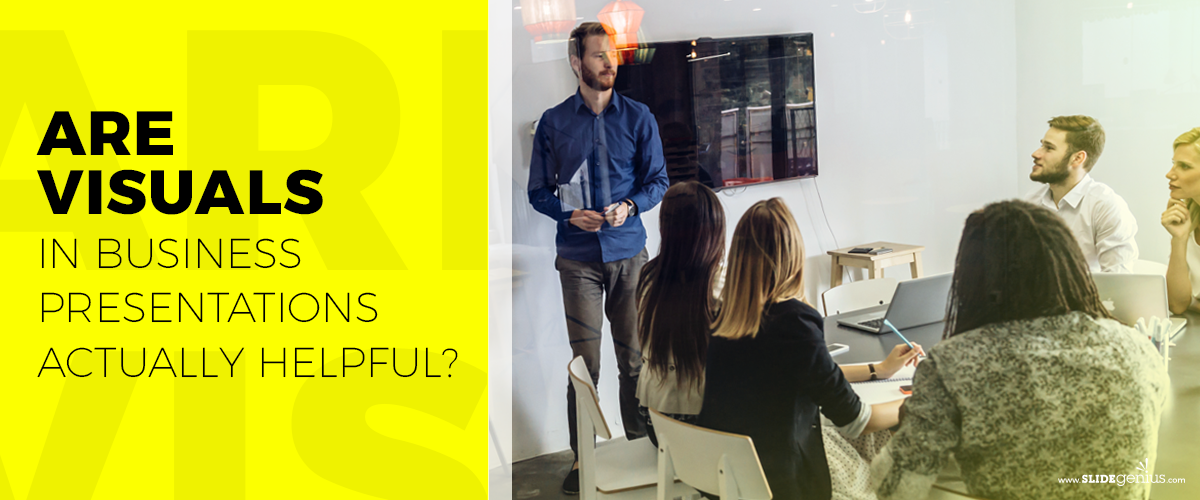
Visual aids upgrade your speech, as the combination of content and design adds flair to your presentation. These make your pitch more understandable and allow your audience to follow the discussion with their eyes. Before making a customized PowerPoint presentation, your goals must be clear—you should be sure of the message you want to convey. When you have a plan, you’ll know what you have to work on to achieve your objectives.So what exactly is so important about visual aids that it’s imperative that you prepare one for your business presentation?

It conveys the message loud and clear.
Visuals help you catch your audience’s attention and engage them throughout your presentation. With these, you can communicate complex ideas in an understandable way. Rather than “telling,” you’re “showing” the audience exactly what you want to say, allowing them to make connections on their own, given that the graphics you use are relevant to your discussion. Approximately three-quarters of adults in America own a smartphone, making it one of the most quickly adopted consumer technologies to date. Apart from this, they spend almost five hours on their phones. Why is this number important? As a presenter, you’d want to keep your audience’s eyes on you. So, to keep their attention off their phones, you have to make your visual aids appealing. Add graphics, images, and animations relevant to the topic at han,d and you’re good to go.
It elicits emotions.
Images are highly subjective. That said, there are certain categories that are more likely to elicit strong emotional responses compared to others. Images can help establish a long-term connection with the hearts and minds of your audience. Rather than using bullet points, images that resonate with the audience inspire them to act. Plus, this makes it easier for them to retain information for a longer period.
It saves processing time.
A picture paints a thousand words, and it holds true to this day. Using visuals relevant to your presentation is less time-consuming than writing a few hundred words. Apart from that, you’d only need to make sure that what you say revolves around that.In addition, because your audience’s brain works overtime to process all the information fed to them, visuals prove to be the most efficient way to make your discussion easier to understand. Your visual aids shouldn’t distract your audience, but rather help them reach the core of your presentation. These can either make or break their first impression of what you are pitching and you as a presenter. Simplicity is key when it comes to customized PowerPoint presentations—the best way to keep your audience’s attention is by removing clutter .Nothing else maximizes efficiency and effectiveness quite like professionally designed visual aids, but take note: you may have the best PowerPoint design, but its purpose is only to add interest and enhance the way you convey your message. You’re still the star of the show, which is why you still have to do well with your speech. References: Miltner, Olivia. “You’re Not Addicted to Your Smartphone – You Just Really Like People.” OZY. April 1, 2018.Tierney, Leah. “6 Types of Images That Elicit an Emotional Response.” Shutterstock. May 5, 2017. www.shutterstock.com/blog/6-types-of-images-that-elicit-an-emotional-response“Using Visual Aids.” University of Pittsburgh. www.speaking.pitt.edu/student/public-speaking/visualaids.html